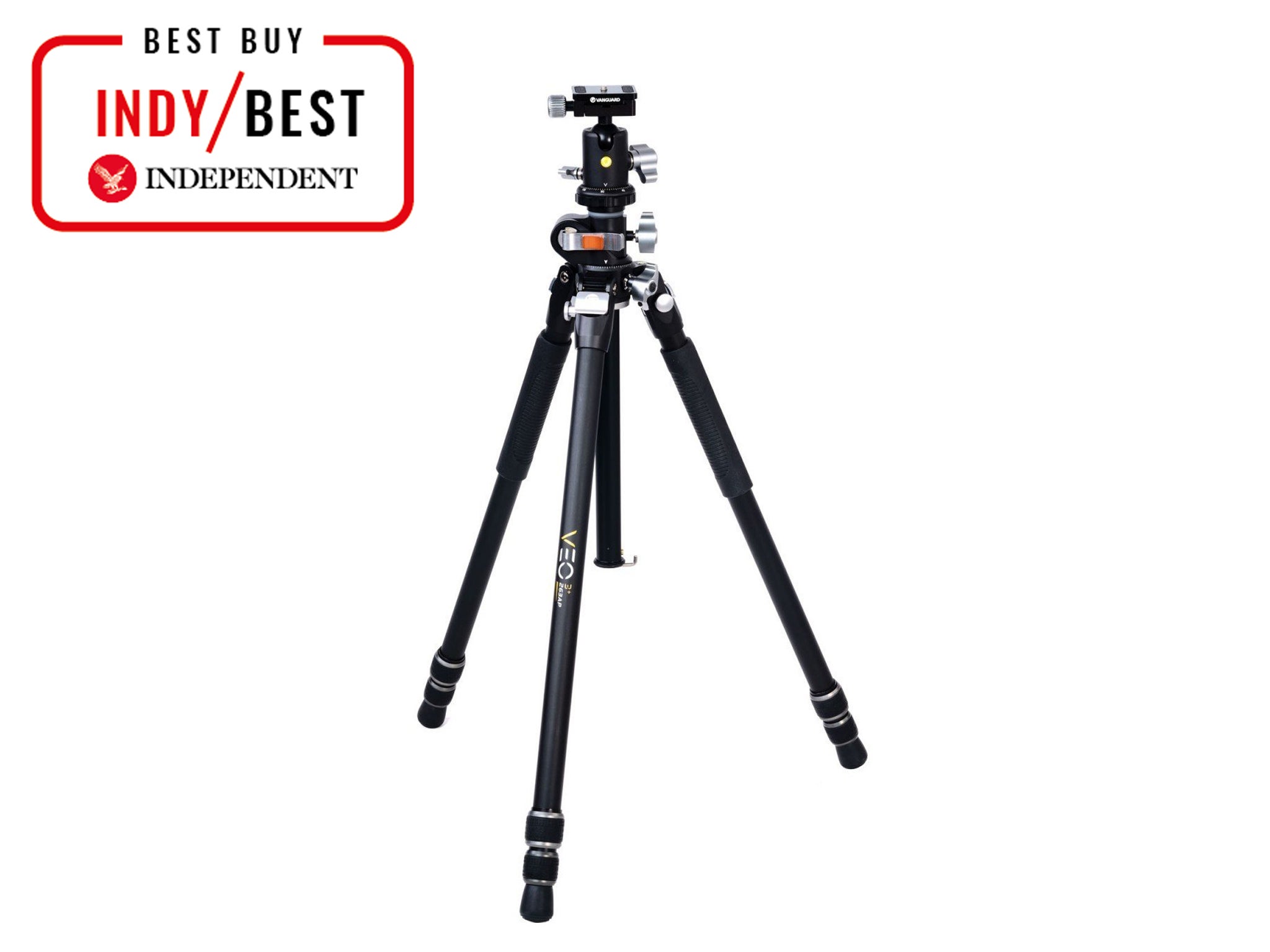
The Independent's journalism is supported by our readers. When you purchase through links on our site, we may earn commission. Why trust us?
8 best camera tripods to elevate your photography
Get sharper shots in tricky conditions with these top-quality stands
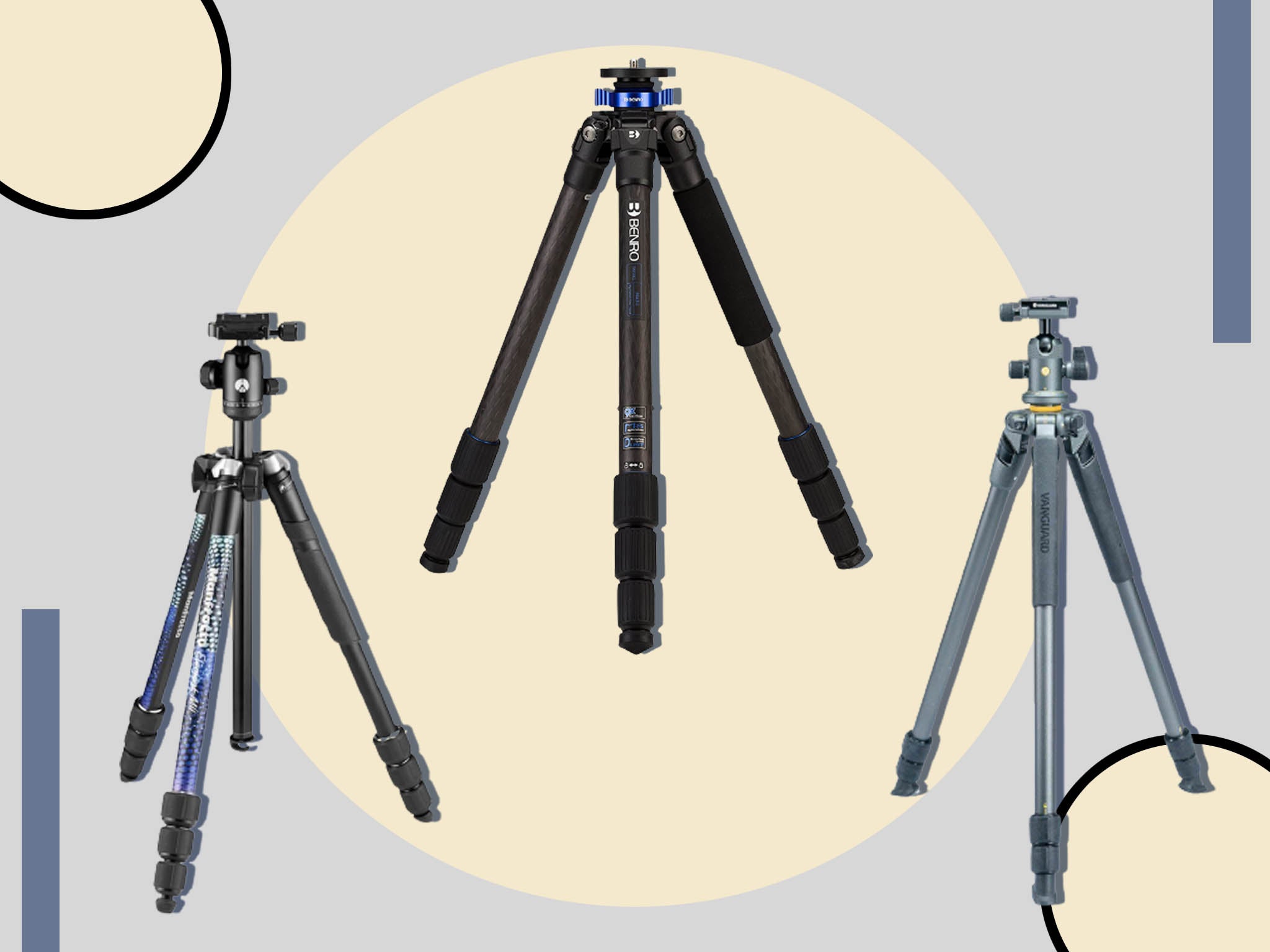
Tripods can add an enormous degree of flexibility to your photography, but buying the right one for your needs can sometimes be a confusing process.
There’s a large amount of jargon and technical terms associated with camera stands. And we’ll explain a little bit more about why they’re used, what they’re made of and what to look for when buying one later on.
But, generally speaking, the main reason to invest in a tripod is that it will increase the sharpness of an image and therefore improve your pictures – especially those taken in low-light conditions and gloomier landscapes.
How we tested
We’ve tested these mainly outdoors, in largely windy conditions with a range of camera models, from small compact setups to larger DSLRs with heavier lenses. We also tested on uneven ground in prone positions for sturdiness.
Here are the best tripods on the market at the moment.
Read more:
The best tripods for 2022 are:
- Best overall – Vanguard veo 3+ 263AB: £229.99, Vanguardworld.co.uk
- Best strudy travel tripod – Manfrotto kit befree 3-way live advanced tripod: £199, Amazon.co.uk
- Best for content creators – Joby rangepod smart: £124.95, Joby.com
- Best for flexibility – Vanguard alta pro 2+ 263AT aluminium tripod: £169.99, Vanguardworld.co.uk
- Best affordable starter tri-pod – Manfrotto element MII aluminium: £97, Manfrotto.com
- Best compact tripods – 3 Legged Thing legends ray carbon fibre tripod: £350.99, 3leggedthing.com
- Best for purists and professionals – Benro TMA38CL 9X carbon fibre tripod: £275, Cliftoncameras.co.uk
- Best for wildlife photography – Gitzo GT2542 mountaineer series 2 carbon exact tripod: £729, Wexphotovideo.com
Vanguard veo 3+ 263AB

Best: Overall
- Weight: 2.45kg
- Telescopic leg sections: Three
- Payload weight: 15kg
- Max height: 172.5cm
This tripod won awards in 2020 as one of the best all-round models on the market. Although we were a little surprised at the relatively high price for a non-carbon fibre model, the investment Vanguard has put into its veo range is paying dividends. This example is a good all-rounder we’d happily recommend to a range of enthusiasts and professionals. The MACC system (as also featured on the alta pro 2 below) is great to use, allowing for a diverse range of framing angles and a far greater degree of flexibility than provided by conventional three-legged tripods.
Manfrotto kit befree 3-way live advanced tripod
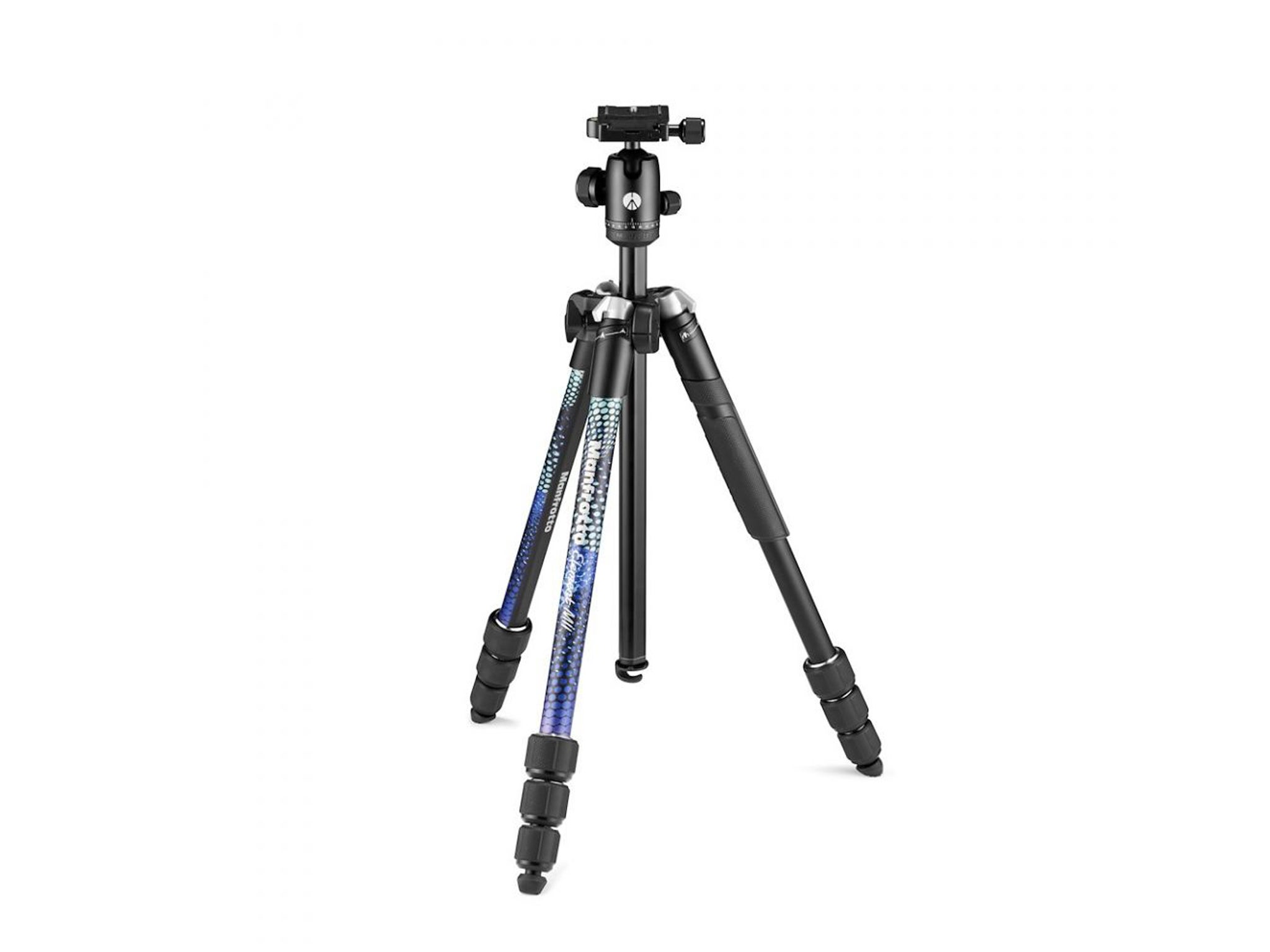
Best: Sturdy travel tripod
- Weight: 2kg
- Telescopic leg sections: Four
- Payload weight: 6kg
- Max height: 151cm
For its size and weight, fully foldable handles and sturdiness up to 6kg endeared us to the kit befree tripod, which comes from Manfrotto, a familiar and trustworthy name in the camera accessory world. This is a great combination of sturdy design and high performance with a focus on the travel tripod world – a notoriously hard bracket to crack.
Joby rangepod smart
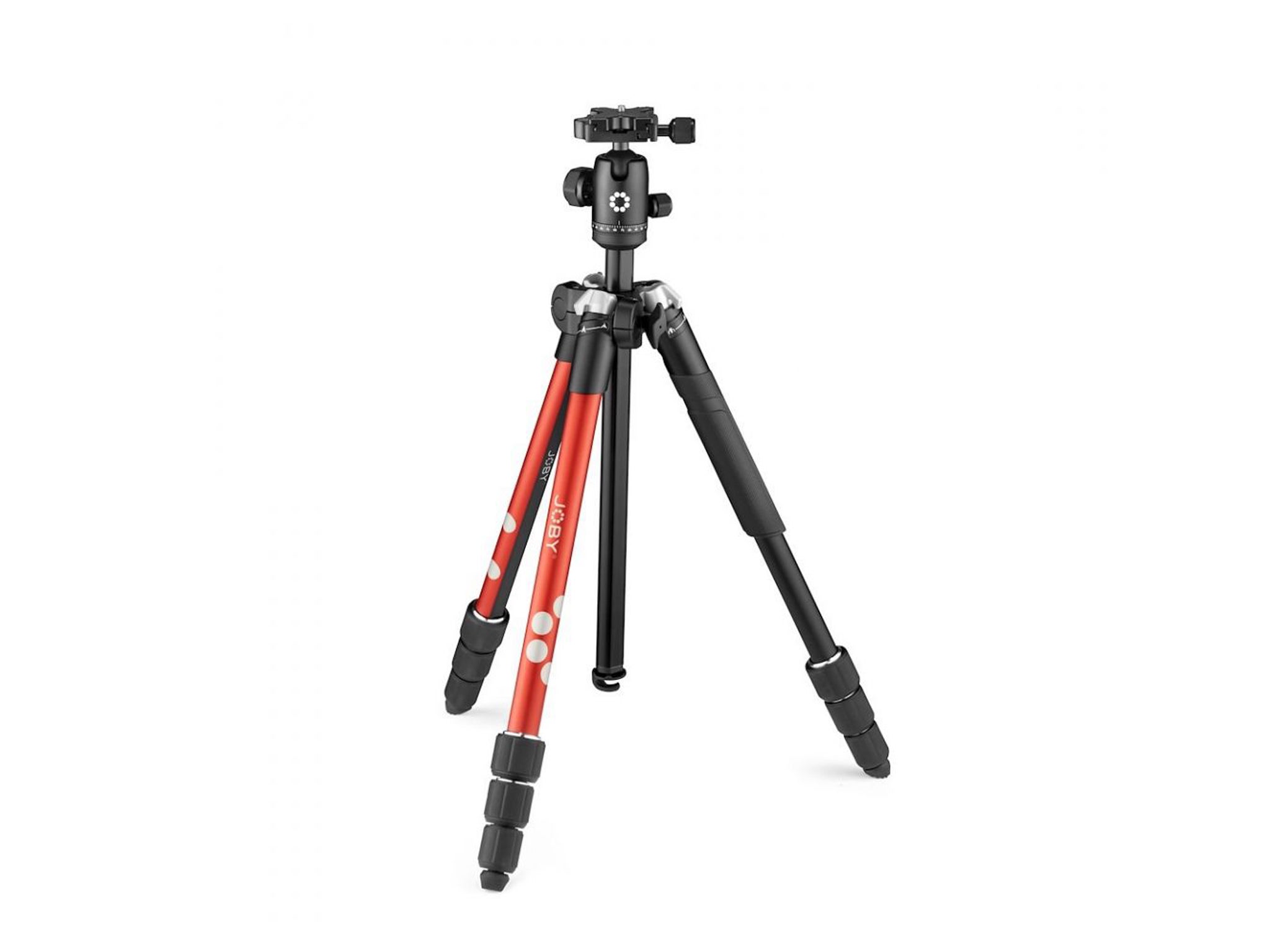
Best: For content creators
- Weight: 1.6kg
- Telescopic leg sections: Four
- Payload weight: 8kg
- Max height: 160cm
Inspired by content creators who need comfortable, straight-forward and portable setups, this offering from Joby comes with a useful smartphone adaptor, while at the same time providing up to 8kg of support for DSLR and mirrorless cameras, which is more than enough for most. We also really liked the carry bag and shoulder strap, which makes it very easy to carry about on more far-flung adventures. There are four extendable leg sections, which we first thought were a little thin, but provided ample support for the equipment we tested.
Vanguard alta pro 2+ 263AT aluminium tripod
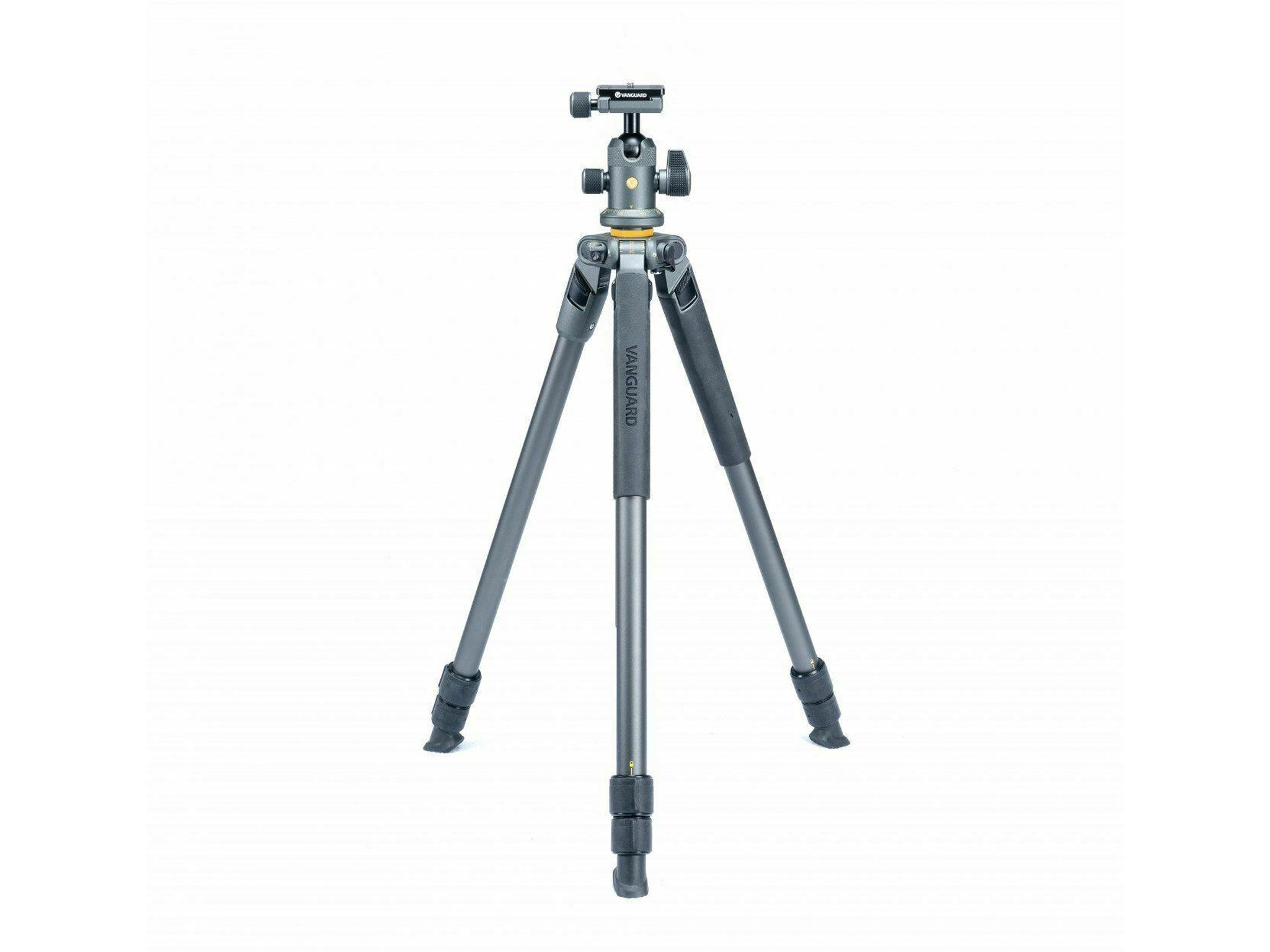
Best: For flexibility
- Weight: 1.8kg
- Telescopic leg sections: Three
- Payload weight: 7kg
- Max height: 162.5cm
Vanguard makes some of our favourite camera equipment to suit a range of needs, with their award-winning alta pro tripod here getting a recent update that adds extra flexibility in terms of angles and framing. We liked the fact that the set leg angles can provide a range of options (20 degrees, 40 degrees, 60 degrees and 80 degrees) which allowed for extreme low-angle photography and macro abilities. We also liked the multi-angle centre column which can pivot 360 degrees while keeping the tripod stationary, allowing for unconventional and interesting viewpoints.
Manfrotto element MII aluminium
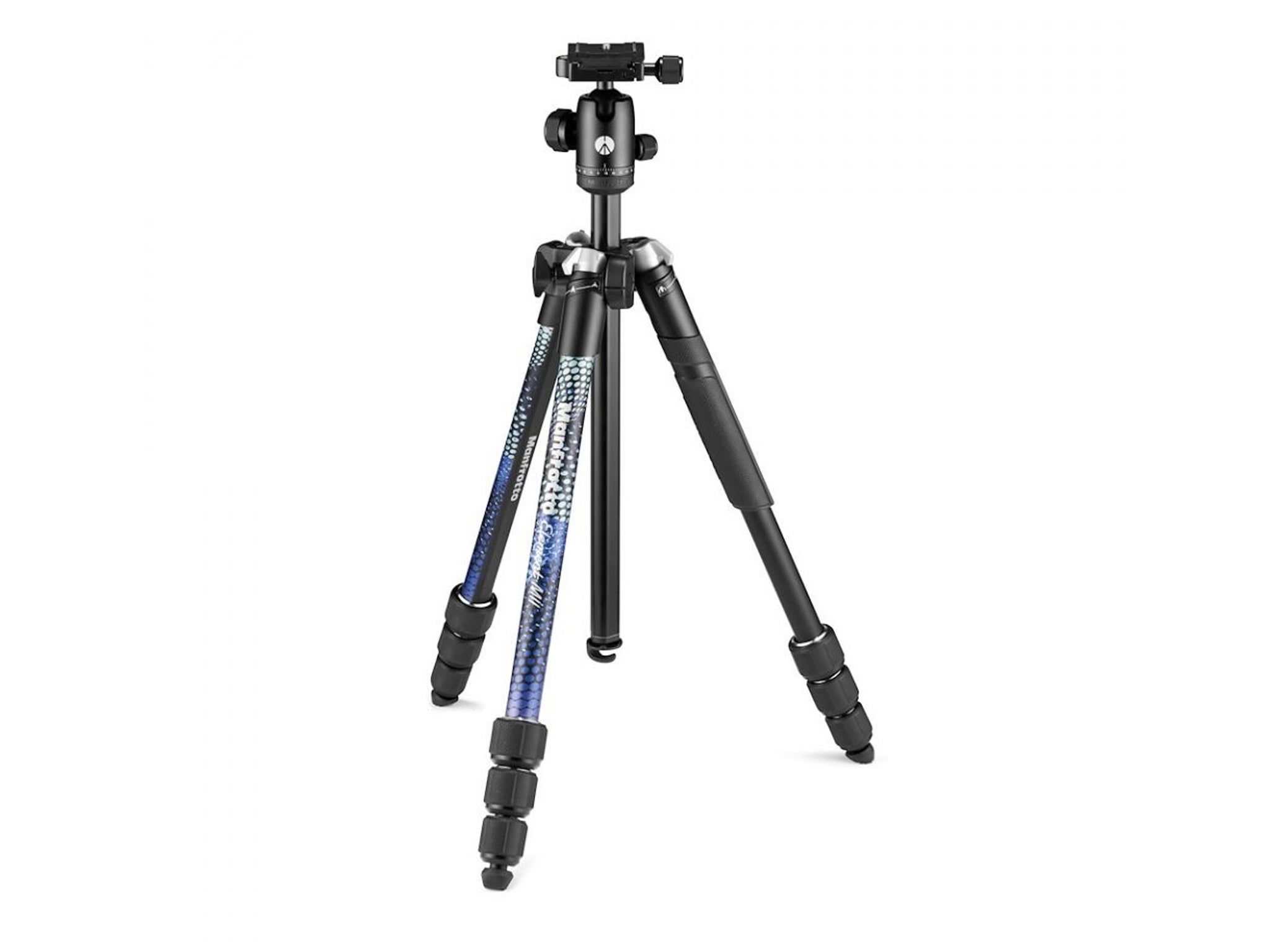
Best: Affordable starter tri-pod
- Weight: 1.55kg
- Telescopic leg sections: Four
- Payload weight: 8kg
- Max height: 160cm
We’d recommend the Manfrotto element MII for hobbyists and perhaps those who need a sturdy, affordable tripod setup to use with slightly smaller equipment like bridge and compact cameras. A simple, lightweight model weighing in at only 1.5kg, it’s a good alternative to some of the heftier examples on this list and we’d recommend it as a day-to-day model for casual weekend walks, or for producing well-framed and sharp interior shots.
3 Legged Thing legends ray carbon fibre tripod
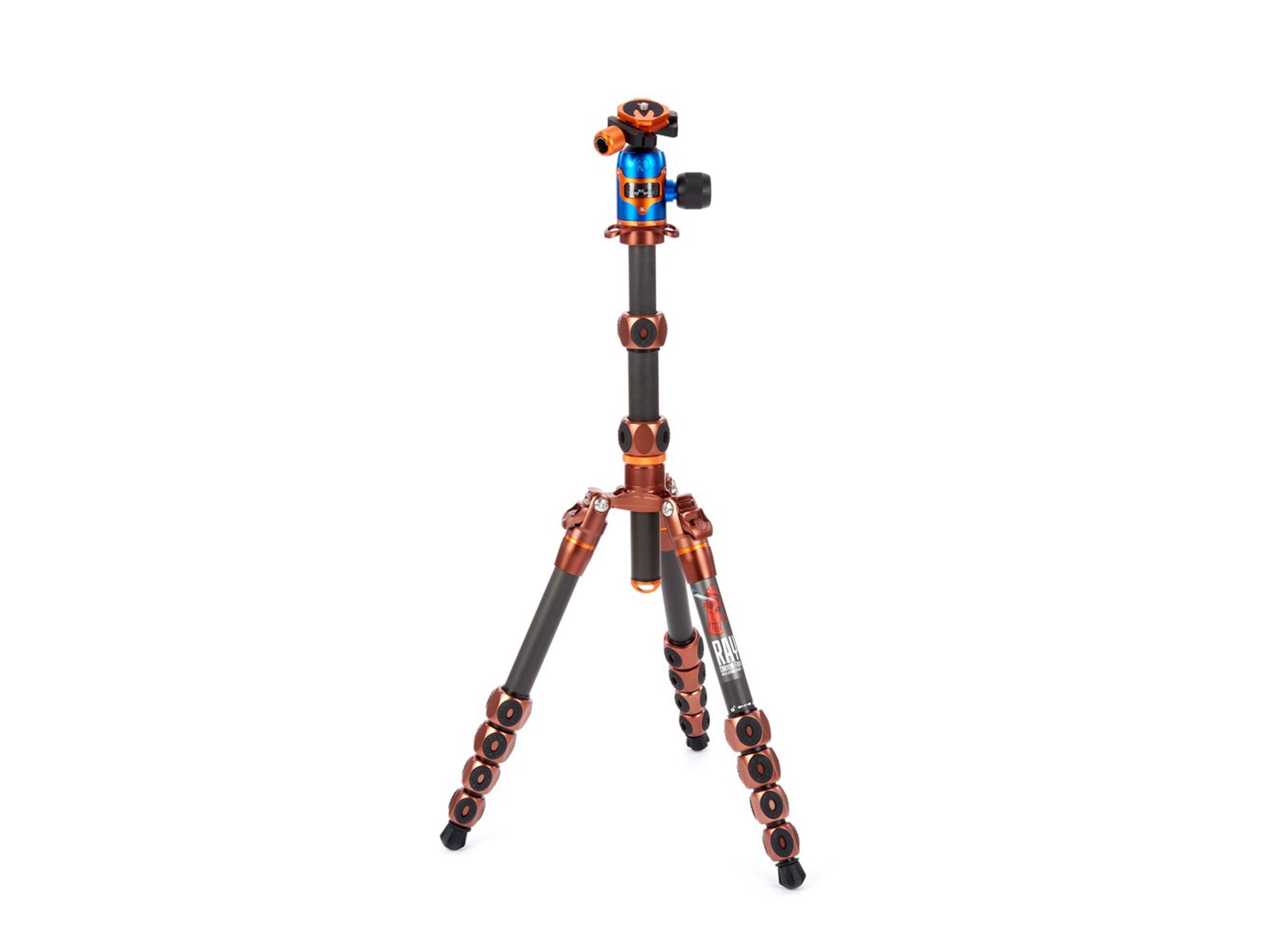
Best: Compact tripod
- Weight: 1.62kg
- Telescopic leg sections: Five
- Payload weight: 30kg
- Max height: 138.3cm
Three Legged Thing is a British company with a different outlook on creating camera gear, now producing some of the finest travel tripods and equipment on the market. This ultra-compact carbon-fibre tripod is one of the most portable setups we looked at, benefitting from its low weight and three detachable legs that can either be used as monopods or boom arms for extra extendibility. It comes in an appealing bronze and blue colouring, which we rather liked, and the weight of the tripod itself is only 1.6kg, meaning it’s quick to pack up, put away and take on your travels.
Benro TMA38CL 9X carbon fibre tripod
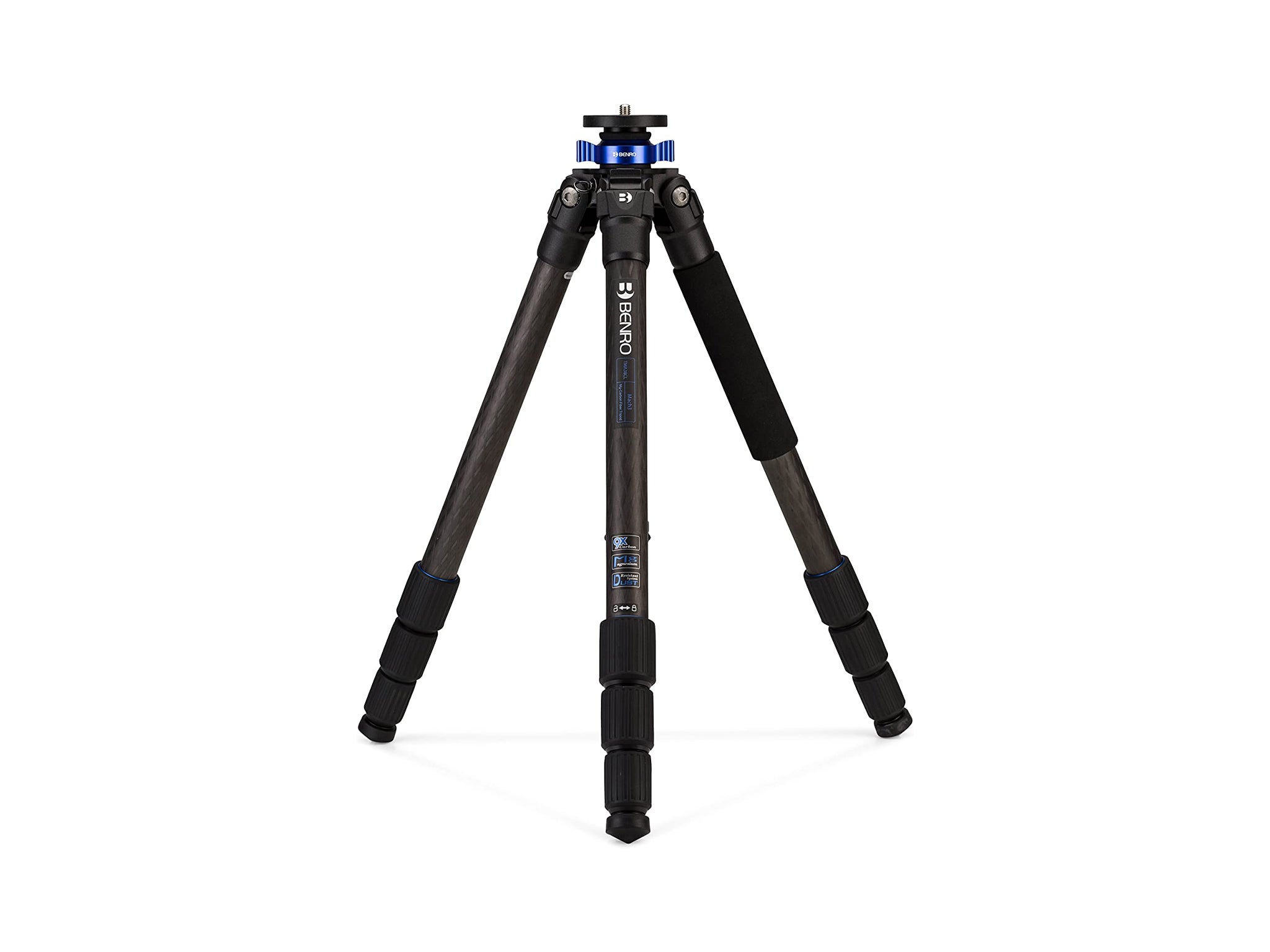
Best: For purists and professionals
- Weight: 2.05kg
- Telescopic leg sections: Four
- Payload weight: 16kg
- Max height: 177cm
One of the sturdiest and most dependable tripod setups on the market at the moment, with a maximum load of 16kg, this is an excellent choice for more serious amateurs and professionals who need a reliable and trustworthy companion. The high-performance twist locks feel well-built and uncompromising, and even though the tripod itself doesn’t extend as high as some others, this will still appeal to purists and those in need of a straightforward, well-built product.
Gitzo GT2542 mountaineer series 2 carbon exact tripod
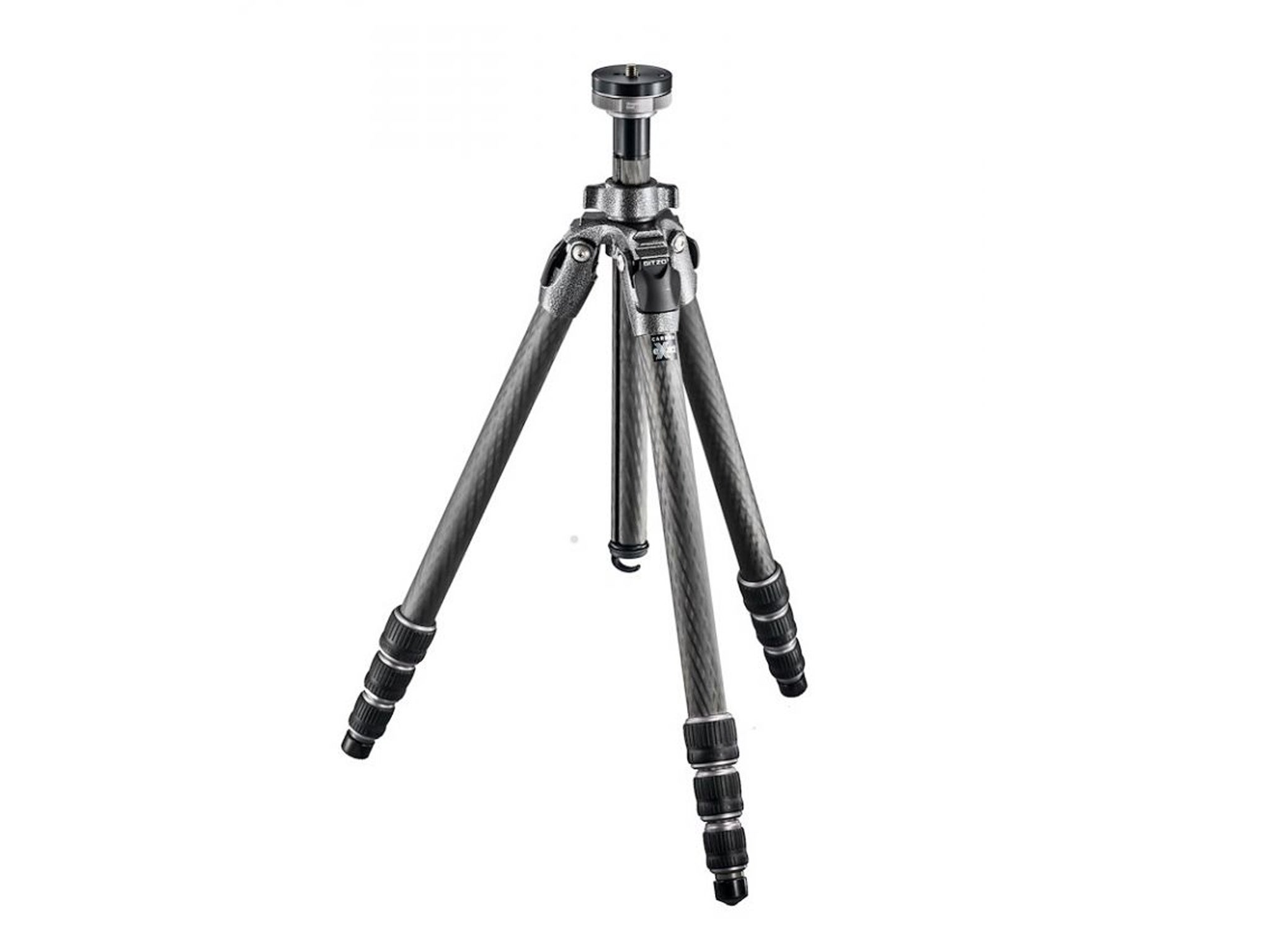
Best: For wildlife photography
- Weight: 1.6kg
- Telescopic leg sections: Four
- Payload weight: 18kg
- Max height: 167cm
Aimed more squarely at the professional market, this offering from Gitzo is a great choice for those who own larger, heavier setups with telephoto lenses for landscapes and wildlife photography. Its price may put it out of reach for more casual or amateur buyers, but there’s a lot to recommend. Classic, stiff legs are built for photographers who need the ultimate in sturdiness, and little features like a built-in gear hook at the bottom to hang a stabilising weight and interchangeable, removable feet (like spikes for snow) set it apart from the rest.
Camera tripod FAQs
Why use a tripod?
Although correctly using a tripod can be a fine art, it is easiest to think of it as an elaborate stand to stop the camera shaking. One of the main reasons for using one is to increase the sharpness of an image – by securing the camera you can decrease the ISO and increase the shutter speed, which makes it perfect for low-light conditions and gloomier landscape environments, where the margin for error is smaller.
Additional reasons to use a tripod might be to secure heavy and cumbersome equipment, like big lenses, or to add a degree of precision to your photography in terms of framing and composition. They’re also often used in studio spaces, to ensure portraits and subjects are well framed, sharp and fully in focus.
What to look for when buying a tripod
A good tripod strikes a balance between a number of different factors: if you are intending on travelling with your equipment, weight is obviously going to be a factor and it’ll give you a significant advantage to purchase a lightweight, portable tripod that folds down easily and quickly. The downside is that these tripods tend to be a bit more flimsy and less rigid for obvious reasons, so it’s worth testing a few out to strike the right balance for you.
You’ll also need to think about what kind of head you want on the tripod itself – this is what keeps the camera on the tripod – and you can generally choose from pan and tilt heads, ball heads and gimbal heads, the latter tending to be for heavier equipment and the first two being for more general use.
Also look at the quick-release plate, which is an aluminium plate at the top of the tripod used to take the camera on and off. Inspect its quality – lower-end tripods can use plastic plates and these are not as sturdy as metal ones.
The verdict: Camera tripods
Vanguard’s multi-angle centre column (MACC) system is one of the most enjoyable to use, and allowed for a greater degree of freedom in our photography. The Vanguard 3+ 236AB would be our choice here – it’s a little on the pricier side but, in our opinion, it’s worth it for a solid all-rounder.
If you’re in the market for a slightly lighter model for travel, we’d choose the 1.5kg element MII aluminium from Manfrotto as the best option here, as we were impressed by its ability to hold our heavier setups.
Voucher codes
For more camera and tech offers, try the links below:
Can’t decide between DSLR, compact, instant or mirrorless? Read our camera buying guide to make it easier
